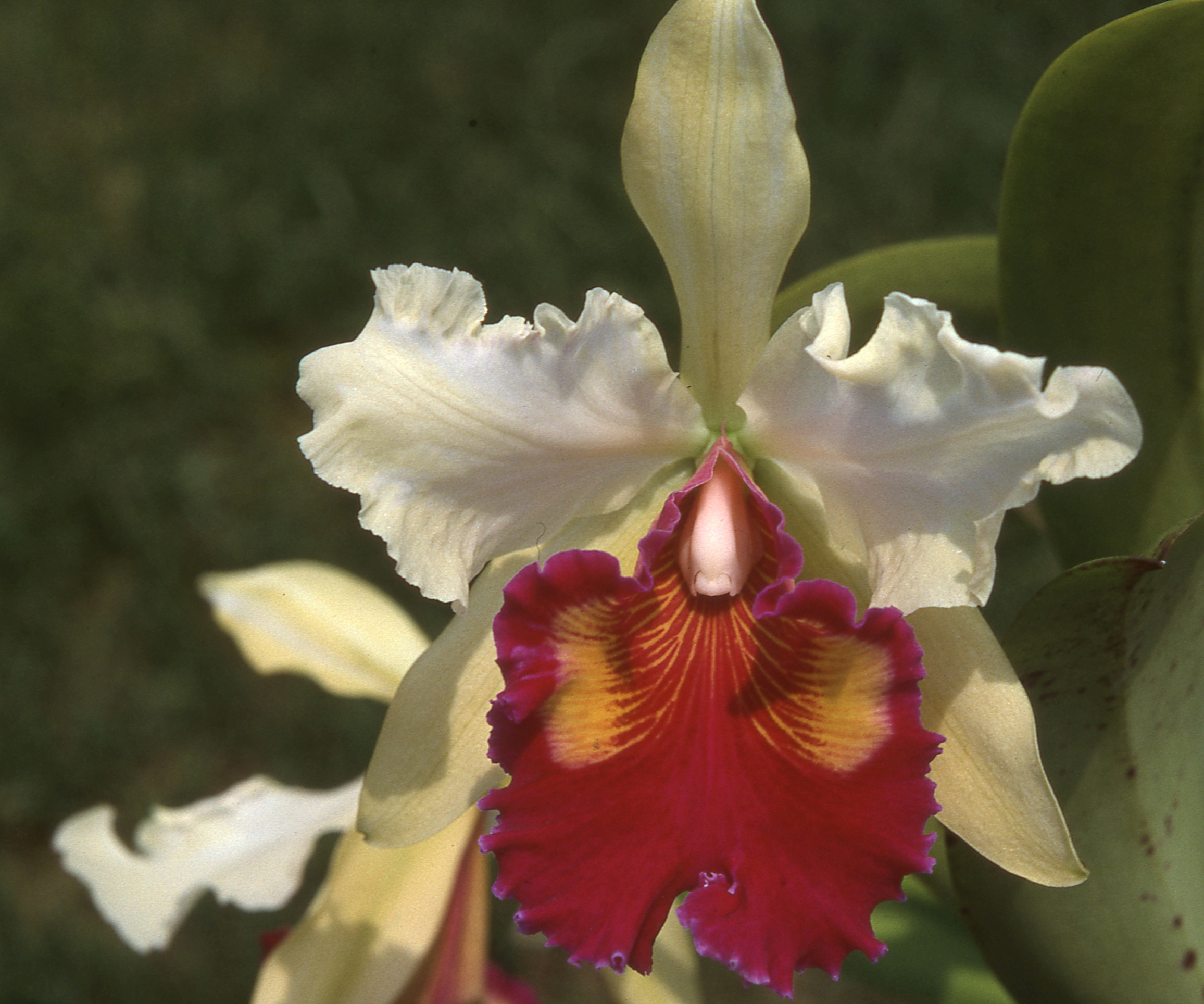“The flowers of Cattleya Prince John (dowiana x Hardyana) had not been seen in nearly a century until Art Chadwick Sr. recently remade the 1913 hybrid.” Photo Credit – Arthur Chadwick
The turn of the century was an exciting time for orchid enthusiasts as new species were being discovered and the very first hybrids were being made. Hardly a week would go by without a collector throwing a lavish party and unveiling a new flower. Breeders, today, look back to those glory days for insight into plant genetics since the results may hold clues for modern hybrids.
My father, Art Chadwick Sr., has been intrigued by yellow orchids ever since he saw an imported Cattleya dowiana at a commercial nursery where he worked in the 1940’s. The species is native to Costa Rica and Colombia and was grown by the tens of thousands in America for summer corsages. Not only were the sepals and petals pale yellow, but the throat was velvety magenta with gold veining. Breeding with C dowiana would surely produce some nice yellows, he imagined.
Art Sr. researched out-of-print orchid magazines and horticulture books in hopes of finding long forgotten dowiana hybrids. He had already remade Lc Ophir (C dowiana x L xanthina) from 1901 and C Triumphans (dowiana x rex) from 1904, both of which produced a bounty of fine yellows in his greenhouse. He came upon a promising entry from 1913 called Cattleya Prince John (dowiana x Hardyana).
C Prince John was named after His Royal Highness Prince John of Wales, a shy eight year old who was fifth in line for succession to the English throne. The junior Prince was the youngest child of King George V and Queen Mary but was kept out of public view due to health issues.
Armstrong & Brown, the legendary English orchid firm from Tunbridge Wells, is credited with making the Prince’s namesake orchid. Founded in 1901, Armstrong became one of Europe’s most well respected nurseries, garnishing gold and silver medals at the great flower shows and creating hundreds of new hybrids, often named for members of the royal family.
Upon further research, my father learned that the original Prince John hybrid was not made with the common yellow form of dowiana but rather with an obscure reddish-purple form. In addition, the other parent, C Hardyana, was purple. No wonder the Prince’s namesake was forgotten. My father then set out to remake the C Prince John hybrid using only yellow parents.
The tricky part was locating a yellow form of C Hardyana since nearly all known plants are either purple or white with a purple lip. Fortunately, a friend sent him a division of C Hardyana ‘Clement Moore’ which, at the time, was one of only two yellow varieties in the world. It was so rare that the Royal Horticultural Society (RHS) in London put it on the cover of their 1916 Orchid Review magazine.
Early one August morning, my dad pollinated the flowers.
Just to be sure that it would be successful, he made the cross both ways which means he took the pollen from one parent and put it on the other parent and vice versa. Surely, one of the seed pods would germinate. As it turned out, both pods were fertile and there were thousands of babies.
Cattleyas take seven years to grow from seed to maturity so breeders have to be patient. In the interim, my father repotted the most vigorous plantlets and made copious notes on what the mystery flowers might yield. He also discovered that, in 1924, a prestigious flower quality award was given to a yellow form of C Prince John – variety ‘Orchidhurst’ AM/RHS so he was encouraged.
Seven years to the day after Art Sr.’s pollen swap, the first Prince John blossom to be seen in nearly a century opened. Sure enough, it was yellow – very pale but still yellow. Soon after, another one opened – a darker yellow. Then a third opened - medium yellow. By the end of the summer, ten plants had bloomed, each intriguingly different, but exactly what the breeder had hoped for.
“Cattleya dowiana is native to Costa Rica and Colombia. This species can be used to breed yellow hybrids even though the color is extremely recessive.” Photo Credit – Arthur Chadwick

“Cattleya Hardyana (dowiana x warscewiczii) is a natural hybrid from Colombia. For many years, variety ‘Clement Moore’, was one of only two known yellows in the world.” Photo Credit – Arthur Chadwick, Sr.
